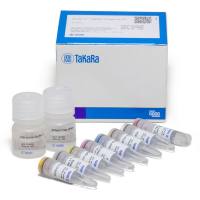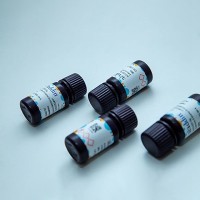Screening Expression Libraries with Solution-Based Assay
互联网
627
To date, the most common approach to screening an expression library for an RNA-binding protein is one based on a procedure that was originally developed for cloning DNA-binding proteins (1 ,2 ): cDNA-encoded proteins from λ plaques are immobilized on nitrocellulose or nylon filters, which are then probed with a labeled RNA containing multimerized copies of the binding site of interest (3 ; see also Chapter 18 ). This technique has been used to clone a number of RNA-binding proteins, and has proven particularly useful for isolating proteins containing double-stranded RNA-binding motifs (e.g., refs. 4 –6 ). However, some RNA-binding proteins no longer bind RNA efficiently once they are attached to filters; these obviously cannot be identified using a filter-based approach. As the isolation of an RNA-binding protein through the direct screening of an expression library can represent an enormous savings in time over its biochemical purification, it is profitable to consider alternate ways of screening libraries that don’t rely on the binding of proteins to filters.









